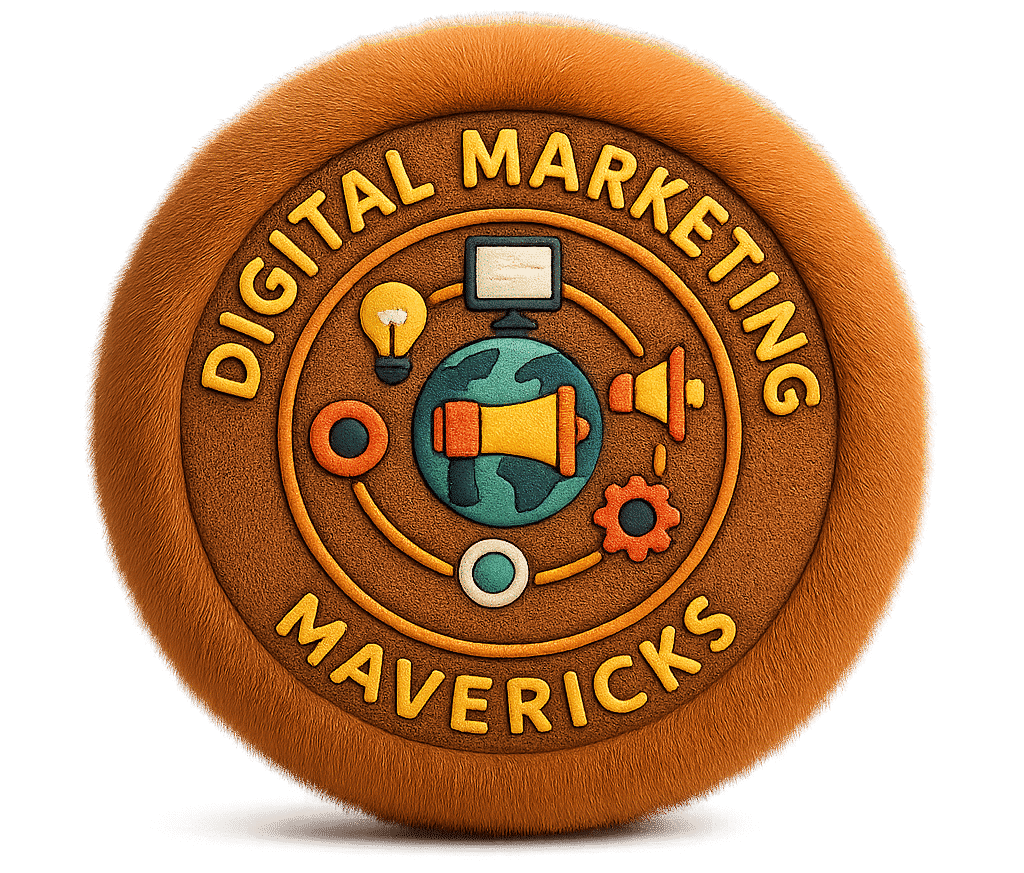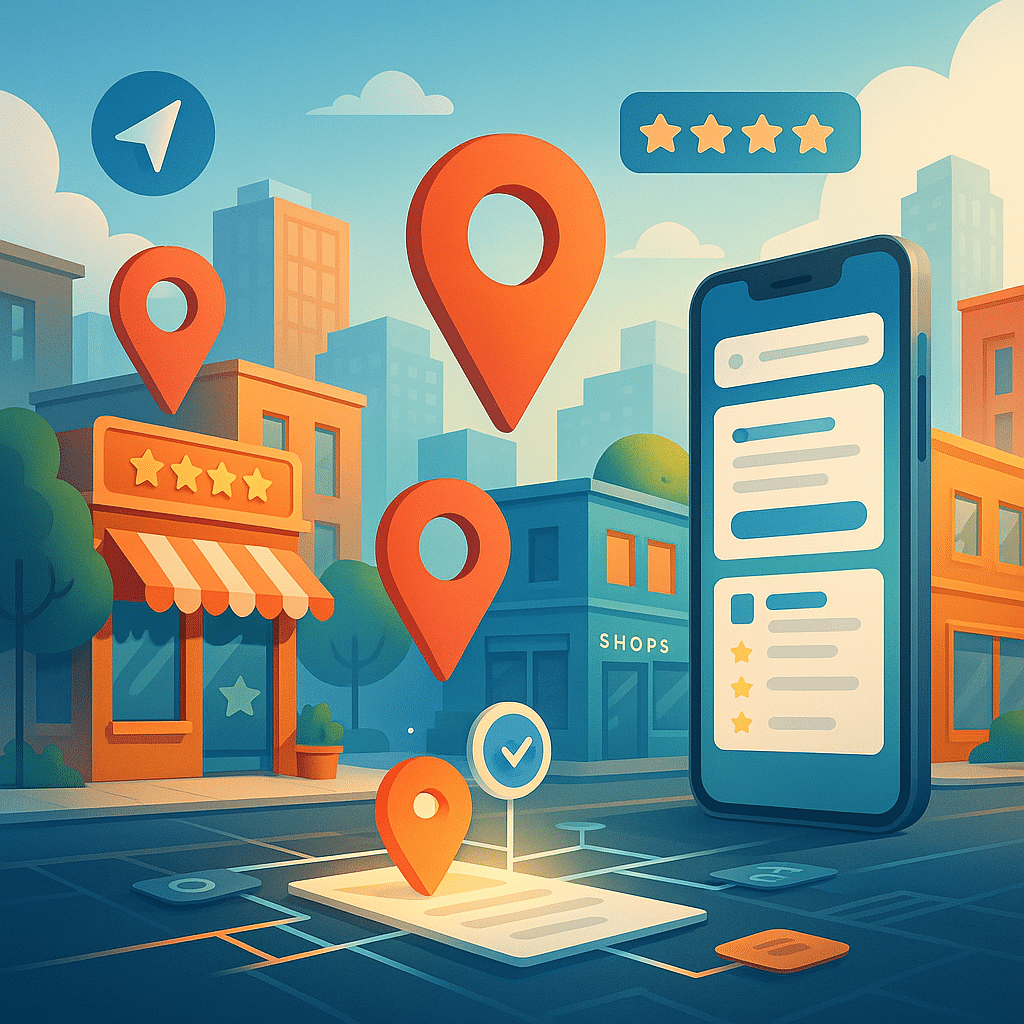If you run a local business and people can’t find you on Google — especially in the map results — you’re handing leads to your competitors.
Nearly half of all Google searches have local intent.
“Dentist near me.”
“Best taco spot in Baltimore.”
“Emergency plumber open now.”
If you’re not showing up when those searches happen, someone else is. And they’re getting the call, the foot traffic, the sale.
That’s where local SEO comes in.
It’s not just about keywords.
It’s about trust, visibility, and consistency — across your website, your Google Business Profile, your reviews, and the rest of the web.
And yes, you need a checklist. But not a generic “submit your site to Yelp” checklist.
You need a real, practical local SEO checklist that actually reflects how Google ranks local businesses in 2025.
This guide breaks down everything you need to get found in the:
- 📍 Google Map Pack
- 🌐 Local organic search results
- 🗺️ Google Maps app and mobile discovery tools
Whether you’re a one-location service provider or managing multiple storefronts, this is your full playbook.
Let’s start checking boxes — and climbing rankings.
What is Local SEO ?
Local SEO is the process of optimizing your online presence so that your business shows up in search results when people nearby are looking for what you offer.
We’re talking about searches like:
- “best pizza near me”
- “Baltimore wedding photographer”
- “chiropractor open now”
When someone Googles something with local intent, Google doesn’t just show regular website results — it pulls in a map, a 3-pack of listings, and localized results tailored to that user’s location.
That’s what local SEO targets.
Local SEO vs. Traditional SEO: What’s the Difference?
| Traditional SEO | Local SEO |
|---|---|
| Competes on a national or global scale | Targets visibility in a specific city or region |
| Focused on website authority + content | Focused on proximity, reputation, and listings |
| Goal: Get traffic from anywhere | Goal: Get traffic from nearby searchers |
| Keywords: “best running shoes” | Keywords: “running shoes Baltimore” |
Local SEO is more than just website optimization — it’s about building local trust signals across the web.
Where Local SEO Shows Up in Google
When your local SEO is dialed in, your business can appear in:
- The Google Map Pack (the top 3 results with reviews and directions)
- Google Maps app (critical for mobile users on the go)
- Localized Organic Results (your actual website pages ranked in local searches)
Each of these is driven by a combination of relevance, proximity, and prominence — and your strategy should address all three.
Bottom line:
If you serve customers in a physical location or defined service area, local SEO isn’t optional — it’s how you compete.
Step 1: Google Business Profile Optimization
Your Google Business Profile (GBP) is the single most important asset in your local SEO strategy.
It powers the Map Pack, Google Maps, and voice searches like “Hey Google, find a coffee shop near me.”
If your profile’s weak, you won’t rank — no matter how good your website is.
Here’s how to get it right:
Claim or Verify Your Profile
- Go to google.com/business
- Make sure you’ve claimed ownership — and verified it via mail, phone, or video
Use Consistent Business Name, Address & Phone (NAP)
- Must exactly match what’s on your website and all online listings
- Avoid using tracking numbers or alternate spellings
Choose the Right Categories
- Your primary category should match your core service (e.g., “Plumber”)
- Add secondary categories that are also relevant (e.g., “Drain Cleaning Service,” “Emergency Plumber”)
Pro tip: Look at top competitors to see what categories they’re using.
Write a Keyword-Rich, Human-Friendly Business Description
- This isn’t for stuffing keywords — it’s for explaining who you are, what you offer, and where you serve
- Use natural local phrases (e.g., “serving the Atlanta metro area”)
Add High-Quality Photos & Videos
- Include team shots, storefront, interior, service work, customer interactions
- Geo-tag images when possible (most smartphones do this automatically)
Visual content builds trust and engagement — which impacts rankings.
Set Accurate Business Hours
- Keep them updated — especially for holidays or seasonal hours
- Google often displays your hours prominently in search results
Turn On Messaging
- Allow potential customers to send you direct messages from your profile
- Respond quickly — responsiveness impacts visibility
Collect & Respond to Reviews (Always)
- Ask satisfied customers for reviews
- Respond to every review — not just the good ones
- Thank people, address issues, and stay professional
Pro tip: Use keywords naturally in your responses to reinforce relevance.
Use Every Field Available
- Add services, products, appointment links, menus, etc.
- The more complete your profile, the better your chance of ranking\
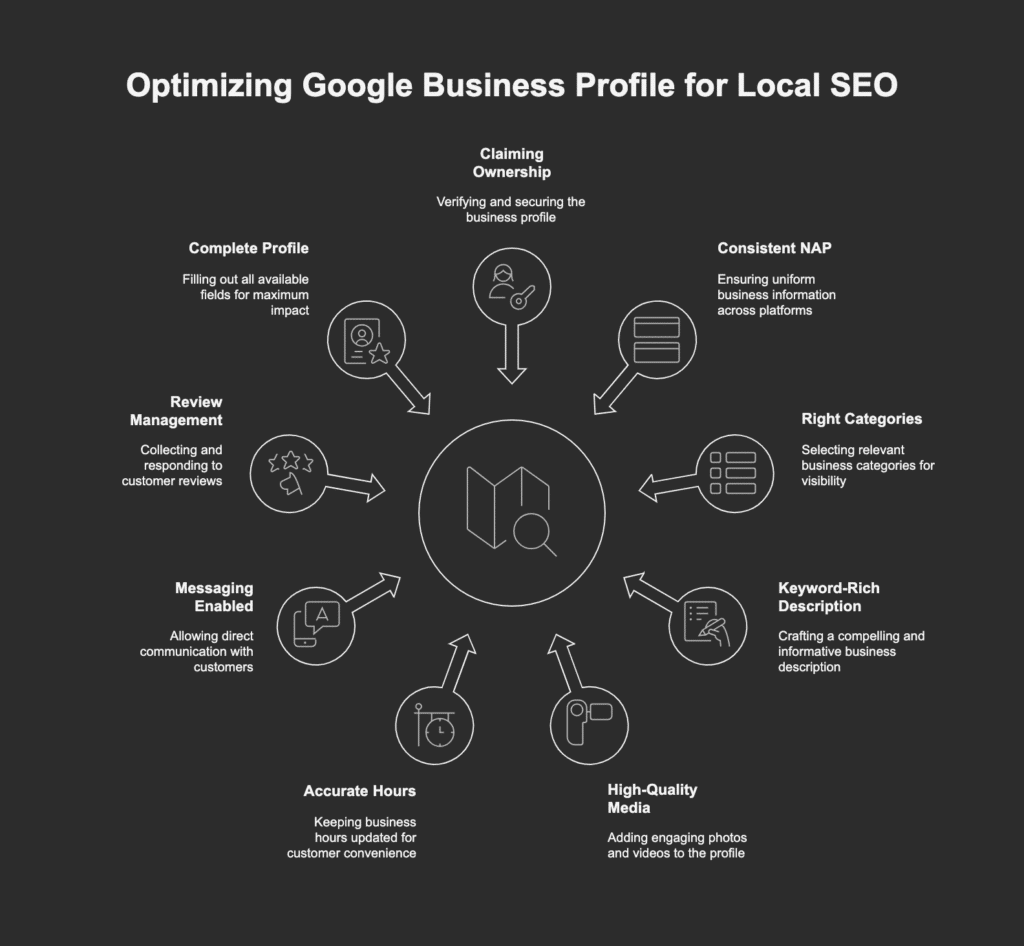
Step 2: Website Local Optimization
Yes — your website still matters for local SEO.
In fact, Google uses your site to help confirm:
- Your location
- Your services
- Your trustworthiness
So if your website isn’t clearly tied to your local presence, you’re leaving rankings (and revenue) on the table.
Here’s how to fix that:
Display Your NAP (Name, Address, Phone) on Every Page
- Ideally in your footer
- Make sure it’s text, not just an image
- Match it exactly with your Google Business Profile
Create a “Contact” and “Service Area” Page
- Your Contact page should include your business name, full address, phone number, map embed, and contact form
- If you serve clients at their location, add a Service Area page listing all cities, neighborhoods, or zip codes you cover
Bonus: Use internal links to and from these pages to strengthen site architecture
Use Local Keywords in Key On-Page Elements
- Include city or region in your:
- Page titles
- Meta descriptions
- H1s and subheadings
- URL slugs
- Image alt text
Example:
“Residential Roofing Services in Baltimore” beats “Home” as a page title — every time.
Create Location-Specific Landing Pages (If You Serve Multiple Cities)
- One page per city/region you serve
- Include unique content, customer reviews, and location-specific images
- Avoid copy/paste across pages — that’s a red flag
Each page should feel like it was written for that audience — not just SEO filler.
Embed a Google Map
- Include an interactive map on your Contact or homepage
- Make sure the pin location matches your verified address
- This helps users and reinforces your geographic focus to Google
Add LocalBusiness Schema Markup
- This is structured data that tells Google you’re a brick-and-mortar or service-area business
- Include name, address, phone, URL, business hours, and geolocation
Use tools like Merkle’s Schema Generator to create your markup.
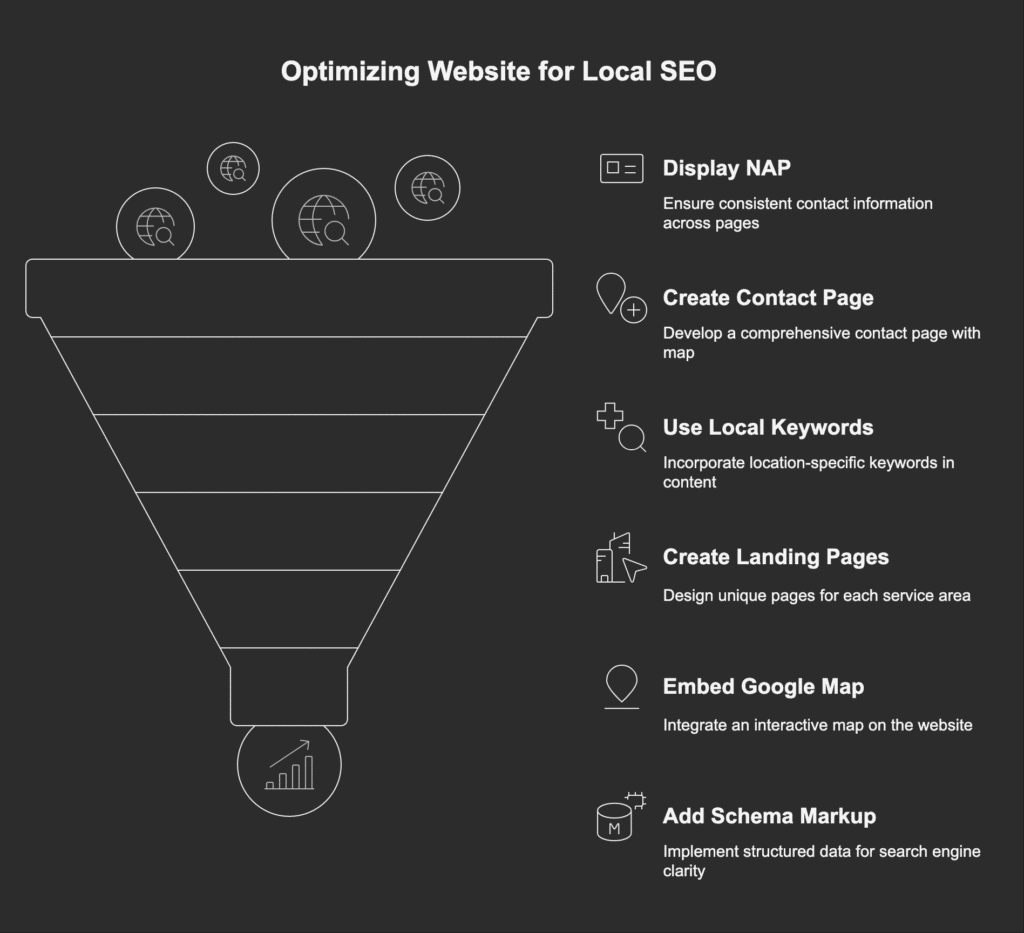
Step 3: Local Citations & Directory Listings
Think of citations as your digital paperwork.
They tell search engines, “This business exists here, does this, and has been verified by multiple sources.”
Citations include your business name, address, and phone number (NAP) published on other websites — especially trusted directories and platforms.
When those listings are consistent and accurate?
Google gains confidence that you’re legit.
When they’re outdated or inconsistent? Rankings suffer.
Submit to the Top Local Directories
Start with the must-haves:
- Google Business Profile (already done, right?)
- Yelp
- Apple Maps
- Bing Places
- Better Business Bureau
- Angi
- Yellow Pages
- Foursquare
- Nextdoor (especially useful for service providers)
These platforms often rank well themselves — owning your listing boosts both visibility and SEO.
Ensure NAP Consistency Across All Listings
Your business name, address, and phone number should be exactly the same across all directories — down to the punctuation and abbreviations.
Bad:
- “123 W. Main St.” on one site,
- “123 West Main Street” on another,
- and “123 Main” on a third? Confusing.
Use a standard format and stick to it everywhere.
Use a Listing Management Tool (Optional, But Efficient)
For bulk management and cleanup, tools like:
- BrightLocal
- Whitespark
- Yext
- Moz Local
…can help you track listings, identify duplicates, and push updates across platforms automatically.
Great if you’re short on time — or have multiple locations to manage.
Don’t Forget Industry-Specific and Local Directories
Examples:
- Lawyers → Avvo, Justia
- Contractors → Houzz, HomeAdvisor
- Health → Zocdoc, Healthgrades
- Restaurants → TripAdvisor, OpenTable
- Local → Chamber of Commerce, city business directories, niche blogs
These often bring in more qualified leads and hyperlocal SEO authority.
Claim and Own Your Listings
Don’t let third parties “manage” your profile — you want full access to update, correct, and optimize each one.
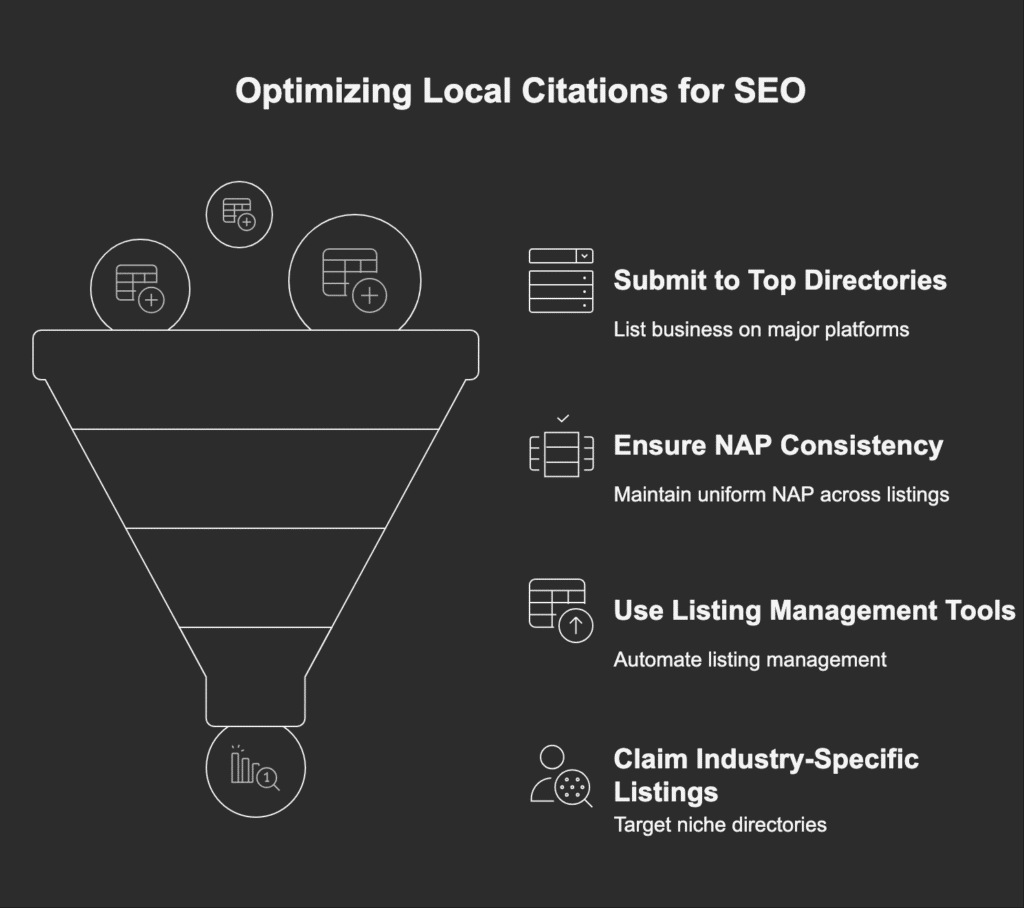
Step 4: Reviews & Reputation Management
When it comes to local SEO, what people say about your business — and how often they say it — directly impacts your rankings.
Reviews aren’t just social proof. They’re a ranking factor in Google’s local algorithm.
In fact, Google itself says:
Review count and review score factor into local search ranking.
Here’s how to turn reviews into a growth engine for your visibility and conversions.
Ask for Reviews (Yes, You Have to Ask)
Happy customers don’t automatically leave reviews. You have to make it easy — and remind them.
Simple ways to ask:
- Post-service follow-up email
- SMS with a direct link to your Google review form
- In-store signage or QR code
- Ask while the experience is still fresh and positive
Pro tip: Create a review shortcut link like:yourdomain.com/review → redirects to your Google Business review page.
Focus on Google Reviews First
They have the most direct impact on:
- Your Google Business Profile ranking
- Map Pack visibility
- Click-through rates from search
Other platforms (Yelp, Facebook, industry-specific sites) matter too — but Google is your top priority.
Respond to Every Review
Not just the glowing ones. Google (and your future customers) want to see that you’re active, engaged, and professional.
- Thank positive reviewers personally
- Address negative reviews respectfully (never argue)
- Use relevant keywords naturally when it makes sense
Example:
“Thanks for the kind words, Sarah! We’re so glad you loved your kitchen remodel here in Austin — we take pride in every detail.”
That’s helpful for SEO and reputation.
Highlight Reviews on Your Website
- Feature real testimonials on your homepage, service pages, and location pages
- Use review schema to make them eligible for star-rich snippets in search
- Bonus: builds trust and boosts conversion rates
Use Review Monitoring Tools (Optional, but Powerful)
Tools like:
- Whitespark Reputation Builder
- GatherUp
- BirdEye
- Google Alerts for brand mentions
…help you stay on top of new reviews, respond quickly, and identify trends.
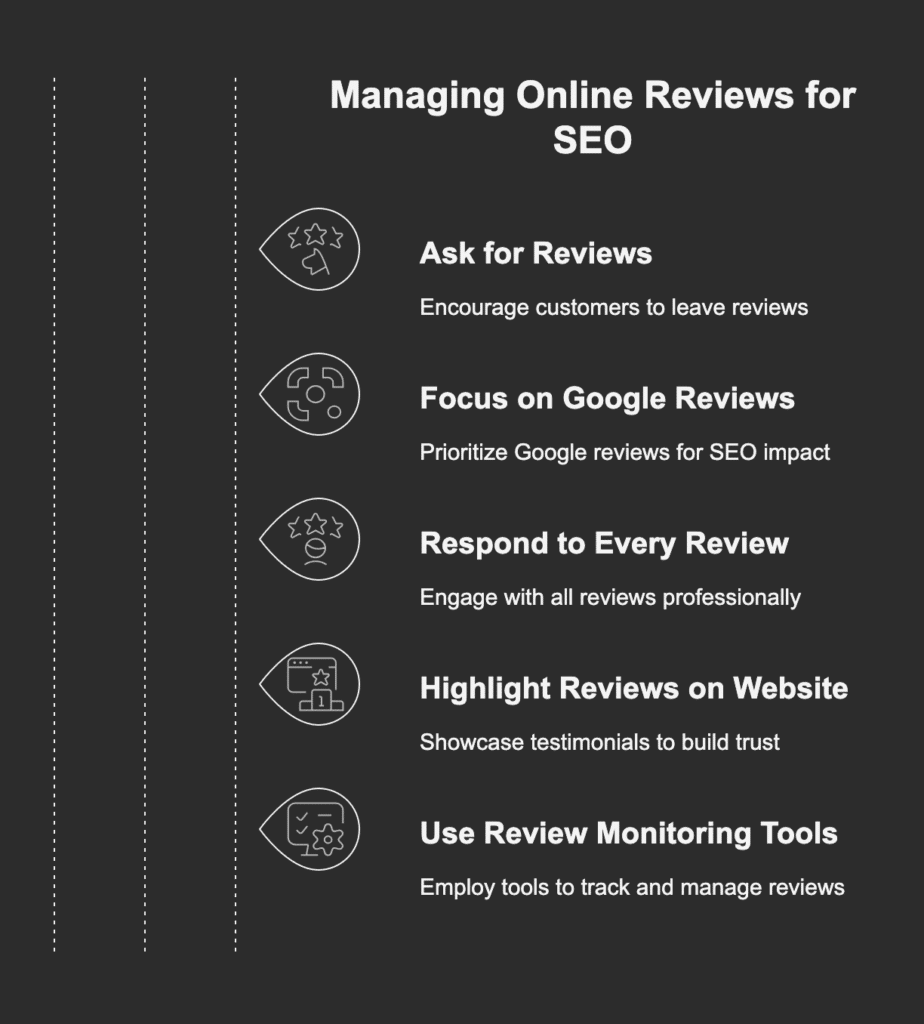
Step 5: Local Link Building & PR
If reviews are what people say about your business, links are how other websites endorse you.
And when those websites are local — news outlets, community groups, or nearby businesses — Google takes notice.
Local backlinks = trust, relevance, and rankings.
Here’s how to earn them without cold-spamming every blogger in town.
Partner with Other Local Businesses
Build relationships with:
- Complementary businesses (e.g., a real estate agent + home stager)
- Local suppliers
- Neighboring storefronts
- B2B vendors
Look for co-marketing opportunities:
- Create a shared blog post or local guide
- Host an event together
- Link to each other’s service pages or resource lists
These links are contextual, relevant, and great for users too.
Sponsor Local Events, Causes, or Organizations
When you support something local, you usually get:
- A logo + link on their website
- Mentions on social media
- A shoutout in newsletters or press releases
Ideas:
- Charity runs or school fundraisers
- Local sports teams or youth leagues
- Meetup groups or entrepreneur events
These backlinks are often on .org or .edu sites — super valuable.
Get Featured in Local Media
Reach out to:
- Local newspapers and blogs
- City business journals
- “Best of [City]” roundups
- Neighborhood magazines or podcasts
Pitch stories like:
- “Local business helping veterans with free service”
- “Black-owned [industry] business celebrates 5 years in [city]”
- “Baltimore’s top [industry] expert shares 3 seasonal tips”
These are great for links, traffic, and brand awareness.
Create Linkable Local Content
Publish content people want to reference or share:
- “Top 10 [Your Service] Mistakes Homeowners in [City] Make”
- “2025 Guide to Hosting Events in Austin”
- “Local Small Business Survival Toolkit”
Then promote it to local blogs, organizations, and community groups.
List Your Business on Local Resource Pages
Examples:
- “Top Baltimore Web Designers”
- “Where to Eat in Highlandtown”
- “Resources for First-Time Homebuyers in Atlanta”
These roundups are often link-hungry — and maintained by bloggers, chambers, or local gov sites.
Find them by Googling:intitle:resources + [your city] + [your service]
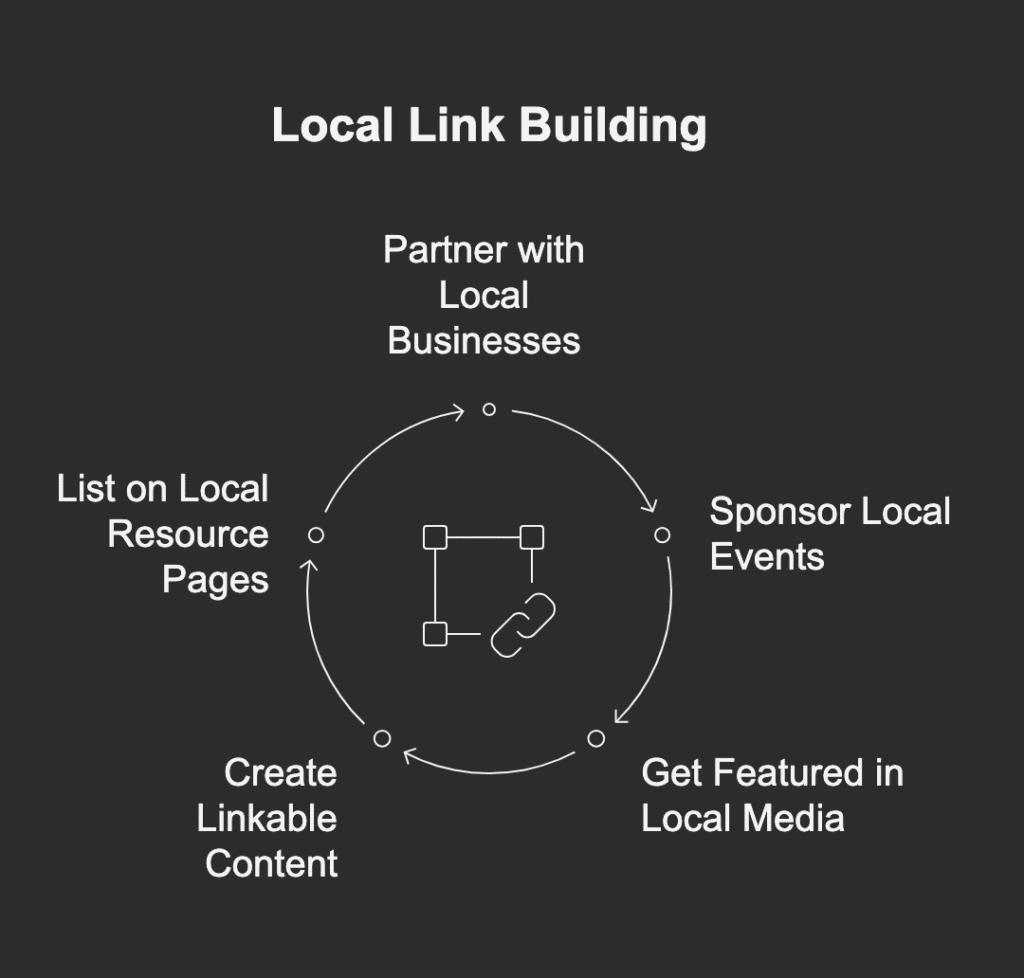
Step 6: Mobile & Page Experience Optimization
Here’s the thing about local searches:
Most of them happen on a phone.
And they’re usually high intent — people searching “near me” are ready to take action right now.
That’s why your mobile experience isn’t just a nice-to-have — it’s a local ranking and revenue factor.
Here’s how to make sure your site delivers when it matters most.
Make Your Site Mobile-Responsive
Your website should:
- Adapt to all screen sizes
- Use legible font sizes
- Space buttons and links so they’re easy to tap
- Load quickly — even on mobile data
Use Google’s Mobile-Friendly Test to catch any issues.
Prioritize Core Web Vitals
These metrics affect both rankings and user experience:
- LCP (Largest Contentful Paint): How fast the main content loads
- FID (First Input Delay): How fast it responds to a tap
- CLS (Cumulative Layout Shift): Does stuff jump around as it loads?
Run key pages through PageSpeed Insights and fix what’s flagged.
Bonus: Fast-loading sites also improve conversions and reduce bounce.
Add Click-to-Call Buttons
If someone’s on their phone and ready to call — don’t make them zoom and fumble to find your number.
Add clear, sticky tap-to-call buttons on:
- Your homepage
- Service pages
- Contact page
- Mobile nav bar (if applicable)
Make it frictionless for leads to reach you.
Use Mobile-Friendly CTAs
“Get Directions,” “Call Now,” “Book Online,” “Start a Chat” — whatever your CTA is, it should be:
- Big enough to tap
- Easy to find without scrolling
- Functional on any screen size
Local buyers are often in motion — your CTA needs to work fast.
Eliminate Mobile Frustrations
Things that kill mobile engagement:
- Popups that block the screen
- Slow-loading images
- Navigation menus that are hard to use
- Forms that don’t autofill or validate properly
Test your site regularly on your own phone. If it annoys you, it annoys your customers (and Google, too).
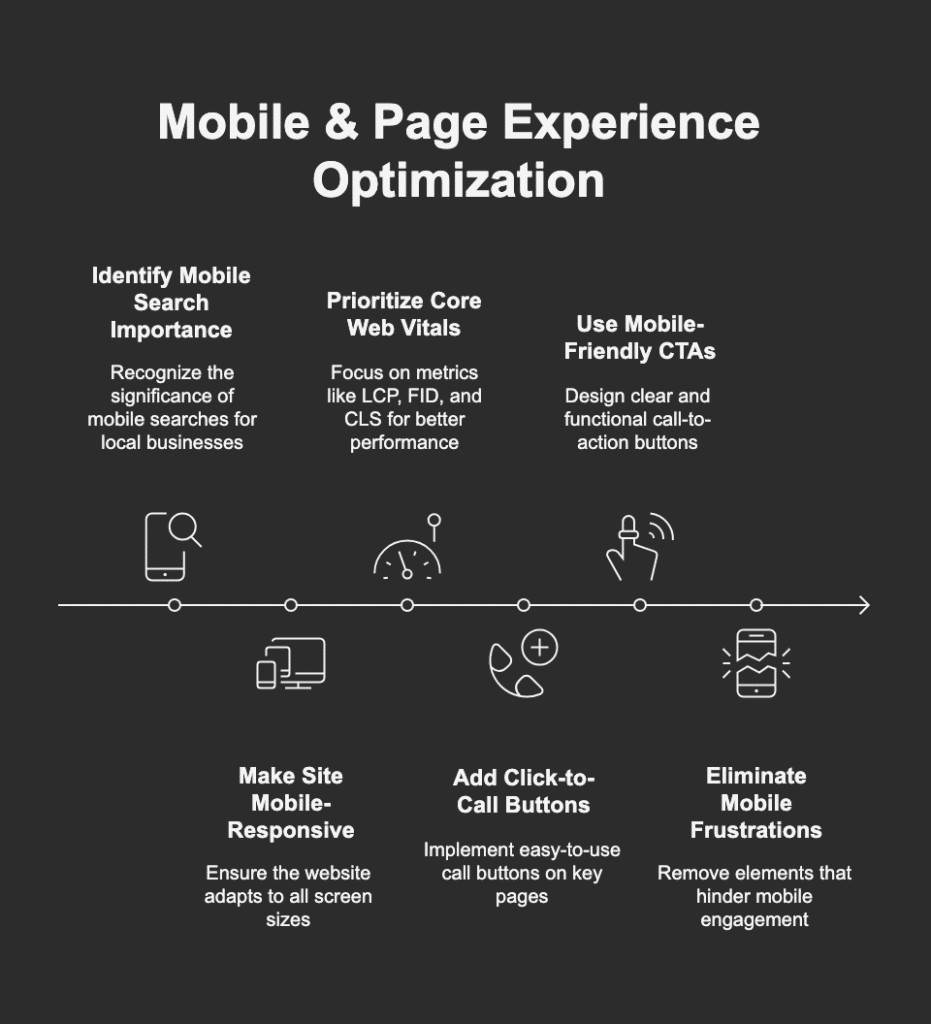
Step 7: Tracking Your Local SEO Performance
Doing all the right things is great.
But if you’re not tracking results, you’re flying blind.
The good news? You don’t need expensive tools or a degree in analytics to know whether your local SEO is working.
You just need to watch the right signals.
Monitor Your Google Business Profile Insights
Your GBP dashboard gives you key data like:
- How many people found you via search or Maps
- What queries they used (e.g., “coffee near me,” “roof repair in Chicago”)
- How many clicked for directions, visited your site, or called
Check this monthly to spot trends and opportunities.
Track Rankings in the Local Pack & Maps
Use tools like:
- BrightLocal
- Whitespark Local Rank Tracker
- Local Falcon
They show you:
- Where you rank in the map results
- How visibility changes based on searcher’s location
- How competitors stack up nearby
Ranking in one zip code doesn’t mean you’re visible everywhere — these tools help you zoom in locally.
Use Google Search Console for Local Queries
In Google Search Console, go to:
Performance → Queries
Filter by location-based keywords (city names, zip codes, “near me,” etc.)
You’ll see:
- What local terms people are using
- Which pages are getting traffic
- What your average position is
Optimize pages around top-converting local terms.
Track Key Conversions
It’s not just about traffic — it’s about actions.
Track:
- Click-to-call buttons
- Direction requests
- Form submissions
- Appointment bookings
You can do this using:
- Google Analytics (GA4 event tracking)
- Call tracking tools (CallRail, WhatConverts)
- Your CRM or booking system
The goal? Know which local actions lead to revenue.
Set Benchmarks & Review Monthly
Keep it simple:
- Track # of reviews
- Track average Google rating
- Monitor ranking movement in top 3 zip codes
- Watch calls & conversions from local search
Log these in a simple spreadsheet or dashboard to track improvement.
New to SEO ? This organic SEO guide is just what you need to start getting some free traffic!
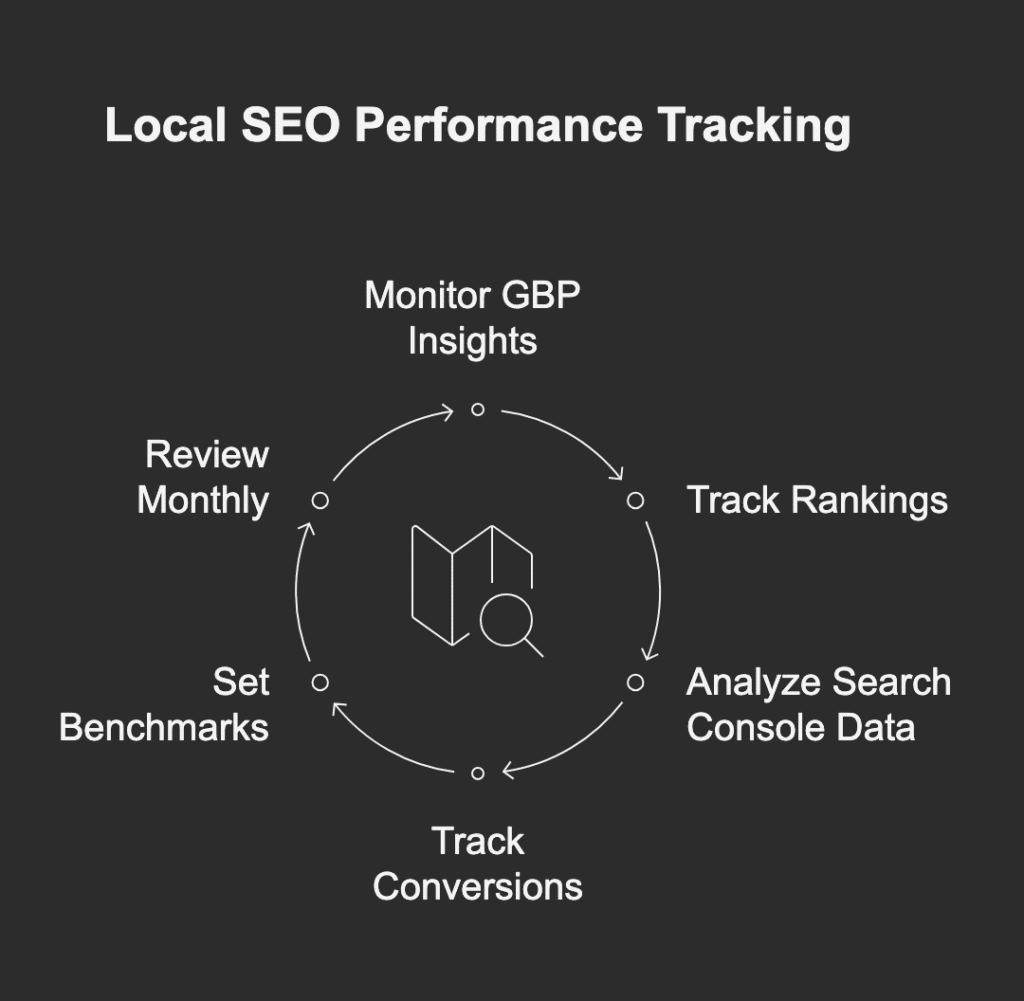
Local SEO for Multi-Location Businesses
Running a business with multiple locations?
Great — more reach, more revenue… and yes, more complexity.
But here’s the good news: Google rewards businesses that structure their local presence properly.
The key is to treat each location as its own entity — without cannibalizing your own rankings.
Here’s how to do it right.
Create a Dedicated Page for Each Location
Each location needs its own URL with unique content — not just a copied-and-pasted address.
Structure it like:
yourdomain.com/locations/baltimoreyourdomain.com/locations/silver-spring
Each page should include:
- Full NAP details
- Location-specific services
- Staff bios or team photos
- Customer reviews from that location
- Embedded Google Map
This helps you rank organically in each city you serve — not just your main HQ.
Set Up a Unique Google Business Profile for Each Location
Each storefront or office location should have its own verified Google Business Profile.
Make sure each:
- Uses a unique phone number and address
- Has its own business hours
- Has real photos of that specific location
- Generates its own reviews (not duplicates)
These GBPs will power Map Pack rankings for each service area.
Use Location-Specific Schema Markup
Add structured data to each page using LocalBusiness schema with:
- Name
- Address
- Phone
- Hours
- Geo-coordinates
@idURLs unique to each location
This helps search engines clearly understand that these are separate, real-world entities — not duplicate listings.
Avoid Thin or Duplicate Content
Don’t just swap out the city name.
Each page should include unique:
- Intro paragraphs
- Customer stories
- Photos or team bios
- Featured services (prioritized per location)
If it feels customized to someone in that city, you’re doing it right.
Consider Location Landing Pages in Navigation
If you have more than 3–5 locations, add a dropdown in your main nav under “Locations” or “Service Areas.”
Link directly to each city’s page.
Helps both users and Google discover your pages easily.
Final Word
You don’t need to game the algorithm or outspend your competitors to win in local search.
You just need to:
- Show up consistently
- Build real trust
- Keep your info accurate
- Encourage happy customers to speak up
- And make it easy for people (and Google) to understand what you do, and where you do it
This local SEO checklist isn’t just a one-time task list.
It’s your playbook for building long-term visibility — in Google search, on the map, and in your community.
Take it one step at a time.
Track your progress.
And remember: in local SEO, small, consistent improvements add up to big wins over time.
FAQs
1. What is local SEO, exactly?
Local SEO is the process of optimizing your business’s online presence to show up in location-based searches — like “near me” or “[service] in [city].”
2. What is the difference between local and organic SEO?
Local SEO targets location-based searches; organic SEO targets broader, non-location searches.
3. How much does local SEO cost?
Anywhere from $500 to $2,500/month, depending on scope and competition.
4. How to do research for local SEO?
Use Google, competitor profiles, keyword tools, and Google Search Console to find local search terms and ranking gaps.
5. How local SEO agencies use rapid url indexer?
To speed up indexing of new pages or citations using indexing API tools.
6. What are local SEO citations?
Mentions of your business name, address, and phone on external websites and directories.
